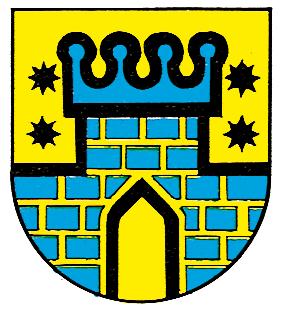we just make the world a little bit better

FIRST STEPS, PROJECT GÜSSING
In order to be able to start H2 production as soon as possible, we will install a containerised methane plasmalysis plant at the Gussing site for the transitional period. We will use a new process to generate climate-neutral hydrogen from natural gas.
We will have the natural gas delivered by LNG in order to be able to conclude several supplier options and long-term supply contracts.
In parallel, we are building a biomass pressurised gasification plant to produce green hydrogen in a highly efficient way. For the biomass required later, we have long-term supply commitments and a concept for the production of this biomass next to the plant at the Gussing site.
Our goal is to provide companies, such as the Austrian POST, with the hydrogen they need for their bus fleets. Our very low production costs mean that we could supply the hydrogen at a price of around € 10/kg in the long term. The current market price is well over € 20/kg hydrogen and the largest European producer has a cost price of around € 20/kg according to research.
In 2024, our capacity is 400 tonnes of H2 per year and will increase to over 5000 tonnes per year by 2026. Further plants will be built on demand.

RIVOLUZIONE VERDE, H2 SICILIA
Sicily wants to become the Mediterranean energy hub. On the one hand, the country has a direct gas supply via a pipeline from Tunisia, and on the other hand, it has large amounts of unused biomass.
We will therefore be able to use both of our technologies and produce annually up to 10,000 tonnes of hydrogen with a larger number of plants. As we have an „Expression of Interest“ by the Federal Ministry of Labour and Economy of the Republic of Austria, we are able tu supply the total quantity produced via the existing (and adapted to H2) pipeline from Sicily to Austria. Within Austria there is a network of pipelines named TAG.

NATIONAL ENERGY STRATEGY OF OMAN
The project presented in this document responds to the Second Nationally Determined Contribution (NDC) of the National Energy Strategy of Oman (NESO), designed to support gradual transition to a low carbon economy and aimed to reduce GHG emissions growth of 7% by 2030.
The production facility is customised to process methane from natural gas while yielding H2 and solid carbon instead of CO2. Natural gas constitutes the biggest operational expense in the project. There are abundant resources of natural gas in Oman and we aim to get a discounted offer or a subsidy for the annual supply contract thanks to a potential support from relevant authorities in Oman.
Complete production down-time is required for 10-14 days annually in order to subject all relevant technical subsystems to a detailed inspection and, if necessary, to replace or repair parts of the plant. The production capacity mentioned in the business plan takes into account with the technical inspections.
As sweet water is a rare product in the Sultanate of Oman, the H2 electrolysis is a principal no-go, as additional energy would be demanded in regard of the desalination of the sea-water.
We have a supplier agreement guaranteed for at least 10 years for the purchase of minimum 60 tonnes of solid biomass per day. This corresponds to about 22.000 tonnes per year.
Bamboo as a regionally grown and extremely rapidly renewable raw material guarantees available resources in the field of energy production. Due to the high calorific value of the wood, the product is optimally suited for biomass plants.
This means we are climate positive! Our internationally valid CO2 certificates are confirmed and approved by ISO 14064.
The amount of CO2 stored can be up to 1,662 tonnes of CO2 per m3 of bamboo within 5 years. A normal tree stores between 0.75 tonnes and 1 tonne of CO2 per m3 within 100 years.
THE SOLID BIOMASS PRESSURIZED GASIFIER
Hinterecker GmbH ́s team, successfully advanced the gasification technology to convert biomass and organic solid wastes to usable energy in a form of high heating-value and valuable Syngas. The Syngas can be used for other valuable products including but not limited to pure-hydrogen gas, synthetic natural gas, synthetic liquid fuel, and chemical products (methanol, ethanol, etc.). The Carbon Recycling results to the reduced quantity of CO2, which provides tradable emission abilities.
Claus Hinterecker is the successor of the famous Otto Berger boiler factory, which developed and deployed already in the 1970s at their client ́s sites biomass technologies for thermal energy production.
Hinterecker himself is a very skilled inventor and developer of various patented technologies in the sector of regenerative energy production. His newest tehnology is a pressurised solid biomass gasifier.
The functional principle of the plant has been evaluated and tested.
A patent application has been filed for the introduction of solid biomass.
THE OVERALL PROCESS IS DESCRIBED AS FOLLOWS:
On the one hand, the hydraulic injection ensures the sealing of the entire pressurised system and on the other hand, it produces a pellet with each stroke, which is introduced into a screw conveyor. This screw conveyor is heated in counterflow by the escaping product gas and thus the biomass begins to pyrolise in phase 1. The screw conveys and crushes the resulting carbon and superheated water vapour and oxygen are fed in at the upper end, which reacts with the carbon (water gas shift reaction) to CO and H2. The flowing gas is passed through a cyclone to ensure ash separation.
Finally, the finished product gas is passed to the outlet via countercurrent heat exchange and is to be discharged from the plant at a maximum temperature of 200°C. The entire plant is pressurised to about 20 bar. A pure synthesis gas is produced in order to produce biomethanol in a downstream process. It is also possible to separate the hydrogen (H2) from the carbon monoxide (CO) by means of ceramic membranes. The system should ideally be used regionally and can be operated with dry biomass of all kinds. The advantage of this system is that the cold gas efficiency is well over 90%.
PROCESS DESCRIPTION
The solid biomass is shredded at the beginning of the process. The feedstock provided in this way is conveyed to the injection ram by means of a combined conveying and tamping screw.
This ram presses the pre-compressed biomass into a highly compressed pellet by means of hydraulics. These pellets are continuously fed into the system, which is under 20 bar, and also ensure the sealing of the pressure system.
Inside the plant, these pellets are now transported towards the main reactor by means of a screw conveyor. This screw conveyor forms the mechanical part of the pre-reactor, which heats the introduced biomass by means of the hot product gas flowing out in its casing.
In the 1st phase of the process, the pellets begin to pyrolyse and activated carbon is produced, which reacts further at the end of the pre-reactor by means of a water-gas shift reaction.
In the 2nd phase, the gas enters the main reactor and the process temperature rises to over 1000° C. The gas is then passed through a cyclone. The gas is then passed through a cyclone to ensure complete ash separation and soot removal.
The desired CO : H2 ratio is set for the synthesis gas (addition of superheated steam, for example) in order to eliminate the CO2 produced in small quantities by the partial oxidation.
Since the process takes place at well over 1000° C, there are no sulphur compounds and no tar in the product gas.
In the last phase, the hot product gas is led towards the plant outlet and cools down to below 200°C when it flows over the pre- reactor (the thermal energy is transferred to the biomass introduced).
SUMMARY
The basic concept of this plant is to produce SYNGAS, primarily for further processing into biomethanol or eFuels. This would offer the highest added value.
However, since the main focus is currently on the production of green hydrogen, only the hydrogen contained in the respective ratio is separated and offered for use.
With a plant expansion, however, it is possible to produce further quantities of hydrogen from the second product contained in SYNGAS – carbon monoxide – in another water-gas shift reaction (WGSR). This is theoretically possible with the total amount of carbon monoxide available. The only limiting factor is the gas section (within the reactor) in which the SYNGAS has a temperature of about 700° C. The necessary process temperature + the maximum possible residence time of the flowing gas within the production process is resulting in the maximum amount of converted hydrogen according to the WGSR.
In numbers: the same amount of biomass would increase the amount of hydrogen produced by 3-8 times.